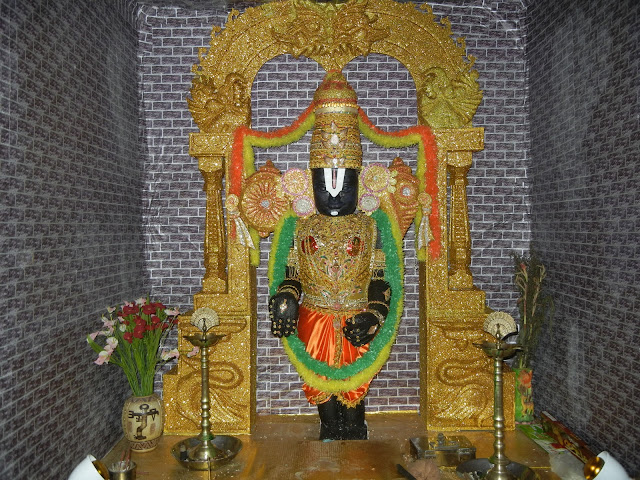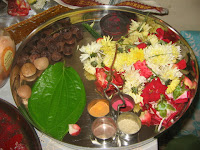There are some people who touch your life in a very special spiritual way. It takes time for you to talk about it in public but I do feel like sharing it here now.
Krishna Baba, was an ascetic who lived in the jungles of Siddeshwar on the Alibag-Mumbai route. For my father and many of his friends who grew up in Thal, visiting Siddeshwar temple was a picnic they loved. My father does not recollect when Krishna Baba came to Siddeshwar and established a math near the spring that flows below the temple on the hillside. However what he does remember is that Krishna baba encouraged him to read about J. Krihnamurthy and other spiritual leaders. Baba used to tell he was in Chaul Datta Mandir before he came to Siddeshwar.
He was very old, tall and thin, he sported a withered beard. He said Satya Sai baba was his guru, however I remember in the picture Satya Sai was very young, a man in the late twenties or early thirties may be. Satya Sai was a godman of the masses where as Krishna Baba was a recluse ascetic. I have sweet memories of Krishna Baba that I will never forget.
One of the incidents I remember is of the visit to Siddeshwar with my father and uncle during Ganpati festival. I was only a child then. We started from Thal home by the 5.30 am bus and alighted at the Khandale bus stop. No confusing this Khandale with the hill station Khandala on Pune highway. This is a tiny village in Alibag Taluka. We walked through a small path thru paddy fields and Ivy gourd vines till the foothills of the Siddeshwar jungle. There are some old steps that you can climb and then the path is a really narrow. It is part of the
Trek path to Sagargad. Since childhood till date it is one of the treks that not just my family but Thalkars and many villagers in the surrounding area enjoy. In the monsoons the single person paths are slippery and one has to watch out for insects and reptiles. We reached up to the Shankar temple in 45 mins washed our hands and feet and took darshan of the Linga in the dark sanct sanctorium. Then my father and uncle gave out a jungle call, "Siddeshwar Maharaj ki Jai, Bum bum Bhole nath" to which Krishna Baba responded. The silence of the jungle reverberated with the Jai ghosh.
Narayan! Madhav! aao beta~~ said Baba as we walked into his thatched hut. I removed my footwear and sat next to the Dhumi, a furnace pit, that most ascetic light up to keep themselves warm. Siddeshwar in monsoons has very high humidity and can make one really cold. After glasses of chai made by Maai, Baba's only companion in the jungle, my father and uncle sat around to discuss spiritual things with Baba. I stepped out and wanted to explore the well and the spring nearby. In one corner were some fresh Kokum skins strewn, I glanced towards the direction and gave out a cry! There was a cobra with a perfect hood ready to hiss at me. I had trespassed I knew. Baba came out and told the cobra, "Chale jaa, bacchi hai" and it went away. Krishna baba had other friends too I got to know later. After this everyone came out and decided to sit on the wall of the well which was located in front of the hut. There was an iron bucket filled with water. Baba told us that they filled the bucket of water for the tiger that visited them at night! They had to be careful about the cows. He had to bring them into the shed else the tiger would feast on them at night. Inspite of these stories I still enjoyed my treks to Siddeshwar, once or twice a year as a child.
While we were climbing the hill, my father expressed the wish of eating idlis. Now how in the world would you get idlis in a jungle. It must have been a sunday as in my family we had started making idlis for sunday breakfast and my Dad was missing it. It was considered fancy food then, in Maharashtrian families. Even in Alibag it was not possible to get idlis in a restaraunt, not that there were many around. Lo! we were served idlis for breakfast by Krishna baba, hot steaming ones with chutney and sambar on a large leaf, picked from a nearby kitchen garden patch. It was not a banana leaf but a large round leaf something like a lotus leaf. It was such a frivilous wish my Dad had and we believe that this was a divine act. In the middle of the jungle, an ascetic who does not have grocery supplies serving us perfectly soft idlis with so much love. What can one say!
At noon Krishna Baba insisted we have lunch too. He was talking to us all the while and in a jiffy he rushed insides and came out with a huge mound of Hrushichi bhaaji served on the leaves. He laid each leaf in front of us and coaxed us, Khao beta, Khao~ I was so young and told Dad that I will not be able to finish the heap, so Dad tried to tell Baba to reduce the serving. He simply said, "she will finish it". I did! This was followed by glasses of fresh Kokum sarbat. The Hrushichi Bhaaji was a divine taste, I still recollect, it was reminiscent of slow cooking on the embers of mixed leafy vegetables, it also had colocasia leaves. It was tart and mixed with freshly grated coconut. Light yet delectable, the taste still lingers in my memory. I know I will never be able to recreate it, because it was touched and blessed by Krishna Baba and I do not have embers in my kitchen.
I am an adult, I have a terrible analytical mind. I do not accept miracles, I try to reason and do not get answers. In the end loosing my mind. I was better off as a child, I accepted the grace of pious men in my life easily then.
It is Hrushi Panchami today and every Hrushi Panchami I remember Krishna Baba who is now in samadhi.
Sharing here the recipe of Krishna Baba's Hrushichi bhaaji. You must read this post on the
Hrushichi Bhaaji that is made in my Thal home to understand why it has this peculiar name. The bhaaji I make here today is in the name of that memory of Krishna Baba, in his style but adapted to the ingredients available here in Blr at this time and cooking on the gas stove.
Ingredients
1 bunch each of any 5 leafy greens, cleaned and chopped fine.
( I used Spinach/ Palak, Chauli , Maath/Amaranth, Dill/ Shepu, Fenugreek/Methi)
1/2 cup grated coconut
1 teaspoon oil
1 large pinch amchur/ dry mango powder
salt to taste
Heat oil preferably in an iron kadhai. Add the chopped green leaves and salt, stir till wilted and cooked. Leave them slightly crunchy. It should not take more than 7-8 mins to cook. Put off the gas and mix in the amchur and grated coconut.
Serve hot on a banana leaf real or steel :D
Yields: 3 cups after cooking.
Tip: Iron Kadhai is best from cooking green leafy vegetables. You won't need iron supplements if this is done in regular cooking.














































